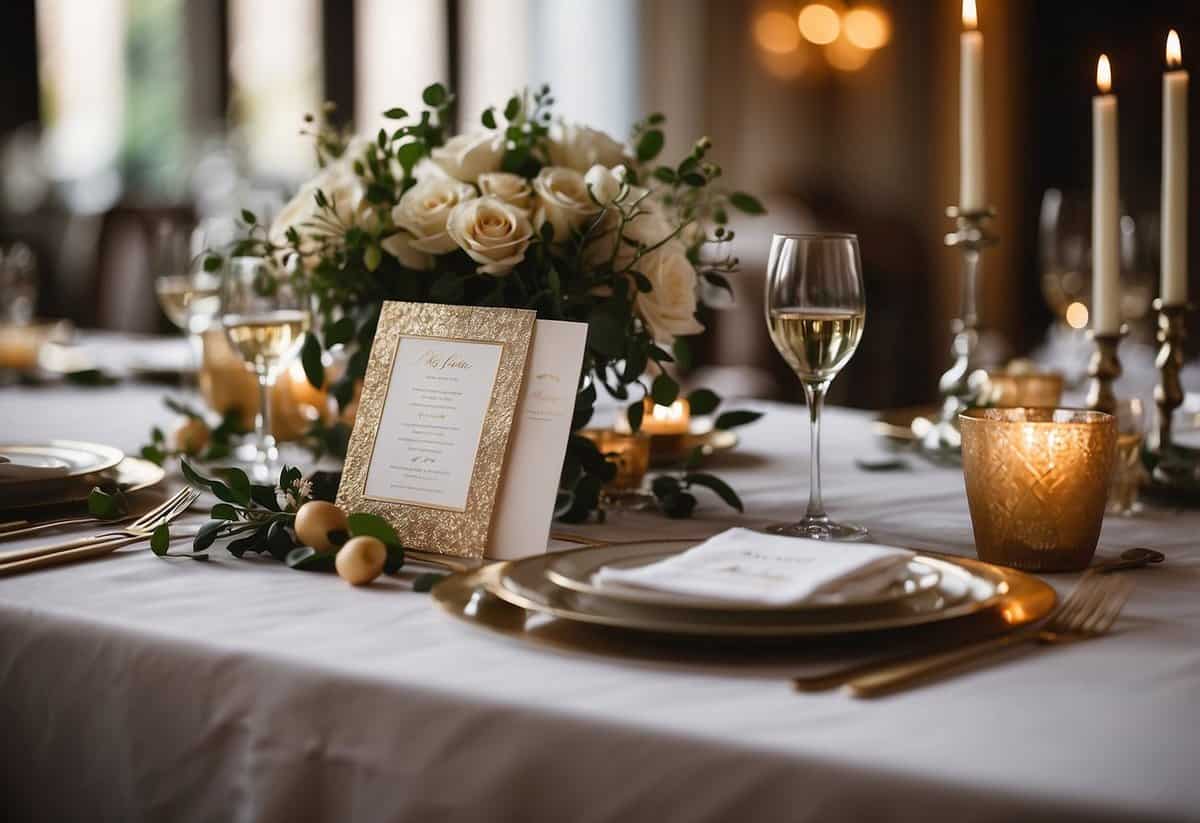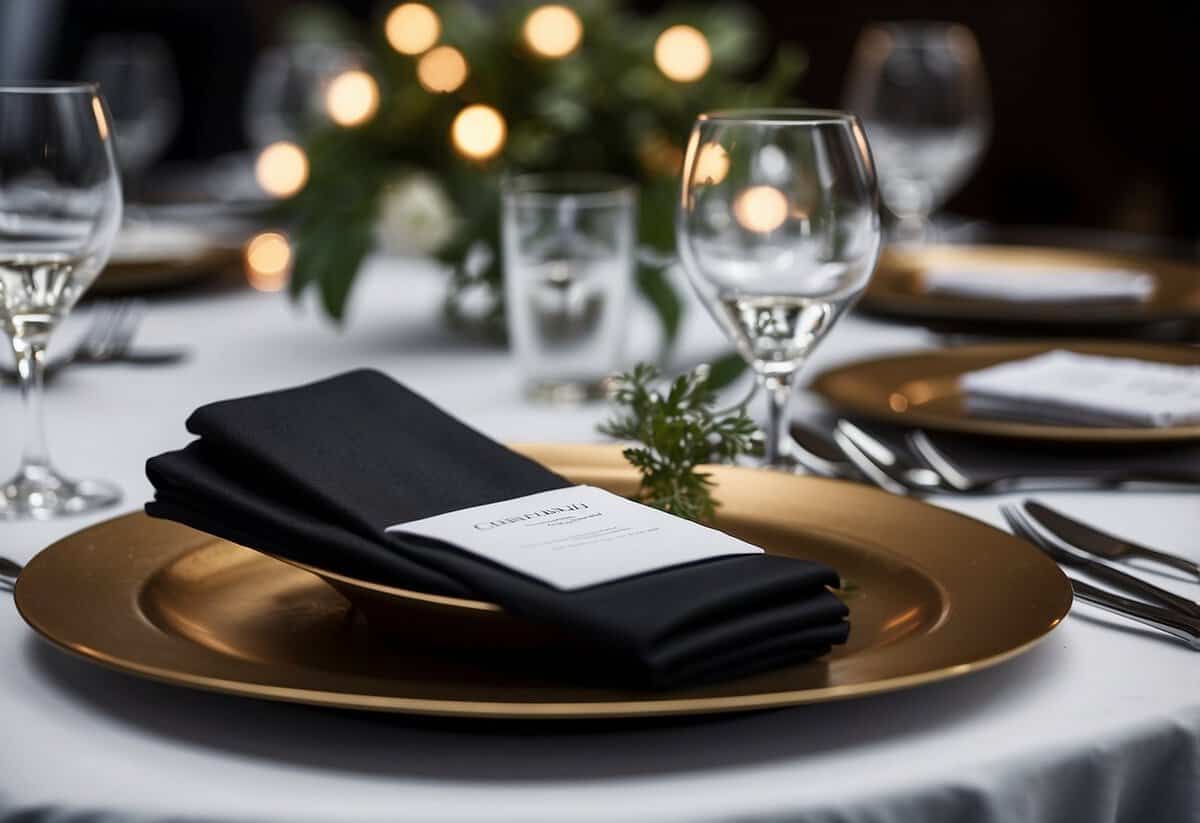Do You Tell Wedding Guests the Menu? Tips for Sharing Your Special Day
Planning a wedding involves juggling a lot of details, and one question that often comes up is whether to tell your wedding guests the menu beforehand. Some couples worry about keeping the menu a surprise, while others prefer to give guests a heads-up. Informing your guests of the menu can make your wedding more enjoyable for everyone, as it helps accommodate dietary restrictions and preferences.

There are several ways to share the menu with your guests. You might include it on your wedding website, or you can add the options to the bottom of the response card, as mentioned on The Knot. Alternatively, displaying a framed note with the escort cards at the reception can work well, which has been suggested in The Knot Community.
Sharing the menu ahead of time is not only considerate but also helps guests plan their day better, especially if they have specific dietary needs. It aligns with modern wedding etiquette and ensures everyone feels welcomed and taken care of. Your guests will appreciate the gesture and enjoy the celebration even more.
The Role of a Menu in Wedding Celebrations

Creating a wedding menu that fits your style and respects traditions can significantly enhance the memorable experience for your guests. It’s essential to understand wedding etiquette and choose a reception style that suits your vision.
Understanding Wedding Traditions and Etiquette
Wedding traditions and etiquette play a big role in how you present your menu. Traditionally, a formal sit-down dinner is common, where guests are served a pre-determined menu. This approach ensures everyone eats simultaneously and maintains a sophisticated atmosphere.
Including menu options in your invitations can help guests with dietary restrictions or preferences. You can add these options on an RSVP card or an insert. It’s polite and shows you care about everyone’s needs. When planning your menu, consider common dietary restrictions such as vegetarian, vegan, gluten-free, and allergies.
Another part of etiquette is displaying the menu at the wedding. This can be done with menu cards at each place setting or a large display near the entrance. It helps guests feel informed and anticipate the meal, making the experience smoother.
Deciding on the Style of the Wedding Reception
The style of your wedding reception will dictate how you present the food. For a formal event, a sit-down dinner is typical. Guests remain seated while servers bring each course. This style highlights elegance and formality, offering a timeless experience.
For a more relaxed vibe, you might choose a buffet or family-style service. With a buffet, guests serve themselves from various dishes. It’s more casual and allows guests to pick what they like. Family-style means passing dishes around the table, creating a more intimate and shared experience.
Another stylish option is food stations. These are themed areas offering different types of food. Guests can mingle and try various cuisines. It’s ideal for a mix-and-mingle type of reception.
Regardless of the style, make sure it fits your vision and the feel you want for your wedding day. Think about your guests and create an atmosphere where everyone feels comfortable and enjoys their meal.
Determining the Menu: Factors to Consider

Choosing the perfect menu for your wedding is important both for reflecting your personality and for pleasing your guests. Focus on dietary restrictions and carefully balancing guest expectations with your own wedding vision.
Considering Dietary Restrictions and Preferences
When planning your wedding menu, it’s crucial to think about dietary restrictions and preferences. Some guests might be vegetarian, vegan, or gluten-free. Speak with your caterers to make sure there are options that everyone can enjoy.
Ask your guests beforehand about any allergies or dietary requirements. Many couples include this in the RSVP. Ensure your caterers can provide meals that avoid allergens like nuts, dairy, or shellfish.
Offering a variety of options can make everyone feel included. For example, include both plant-based dishes and meat options. You could serve a colorful vegetable platter or a hearty pasta dish that’s free from common allergens.
Remember to consider the needs of children. Kids might prefer simpler dishes. An easy-to-eat option like chicken fingers or a small portion of pasta can keep them happy and make their parents’ lives easier.
Balancing Guest Expectations with Your Wedding Vision
While it’s important to consider your guests, don’t lose sight of your wedding vision. Your menu should reflect your tastes and personality. Do you love a specific cuisine? Think about incorporating those flavors.
Keep your budget in mind. Expensive culinary delights are great, but you don’t need a lavish meal to create a memorable experience. Simple, well-prepared food can leave a lasting impression.
Consider the seasonality of ingredients. Serving seasonal and local products can elevate the dining experience. For example, if your wedding is in spring, options like fresh asparagus or strawberries can highlight the time of year.
Balancing tradition with creativity can also delight your guests. Offer a unique twist on a classic dish, or include a beloved family recipe. This personal touch can add meaning and make your menu unforgettable.
Communicating Your Menu to Guests

Sharing your wedding menu with guests can be done in several attractive and practical ways. It ensures that everyone is aware of their choices and any dietary accommodations.
RSVP Cards and Wedding Websites
Using your RSVP cards to communicate menu options is practical and efficient. You can include a section where guests can select their preferred meal. This helps you plan accurately and cater to everyone’s preferences. To fit all the necessary information, consider using the reverse side of the RSVP card.
Another effective way is updating your wedding website. You can provide detailed descriptions of the menu options there. This allows guests to view their choices ahead of time and make an informed decision. Including an FAQ section for dietary restrictions on the website is also helpful.
Menu Cards and Table Settings
Menu cards at each place setting add a sophisticated touch to your reception. These cards can detail the dishes being served, enhancing the dining experience. If your guests have pre-selected their meals, the menu cards can highlight special features or accompaniments of each dish.
Incorporating place cards with menu selections can help the serving staff ensure that each guest receives their chosen meal promptly. Avoid attaching place cards to edible favors, as these items might get misplaced, causing confusion during the meal service.
Using beautiful stationery for these elements not only informs your guests but also adds elegance to your dining setup.
Presentation and Serving Options

Choosing how to present and serve food at your wedding sets the tone for the event. Key options include sit-down meals, buffets, and food stations. Additionally, creative serving ideas and late-night snacks can enhance your guests’ experience.
Sit-Down Meals vs. Buffet and Food Stations
Sit-down meals are formal and traditional. Servers bring plated meals to guests seated at their tables. This option can feature selections like chicken, meat, or salmon. Plated meals add a touch of elegance but can be more expensive due to the need for additional staff.
Buffets and food stations offer more variety and flexibility. Guests serve themselves or choose from different stations featuring varied cuisines. This method encourages mingling and can include options like dessert tables and cocktail-style canapés. It’s generally less formal but more interactive and relaxed.
Innovative Serving Ideas and Late-Night Snacks
Innovative serving ideas can make your wedding memorable. Consider displaying the menu on a stylish menu board or using platters for shared dining experiences. Servers can circulate with trays of small bites during cocktail hour, adding a touch of sophistication.
Late-night snacks keep the energy up as the evening progresses. Options might include sliders, mini pizzas, or gourmet fries. These snacks ensure your guests stay fueled for dancing and enjoying the open bar. Incorporating these creative touches makes your celebration unique and enjoyable for everyone.
Final Preparation and Coordination

Final preparations focus on clear communication with your caterers and venue while keeping a close eye on the timeline and guest count to ensure everything runs smoothly.
Communicating with Caterers and Venue
Staying in touch with your wedding caterer and the venue staff is crucial. First, confirm the final headcount. This helps caterers prepare the right amount of food.
Discuss any special dietary needs. Make sure they know any allergies or preferences. Clear communication prevents last-minute surprises.
Double-check the menu. Confirm each meal choice and ensure everything is available. This involves reviewing the menu with the caterers and making any tweaks needed.
Ensure the catering team is aware of your wedding food ideas. Discuss the setup and serving style, whether it’s a buffet, sit-down meal, or food stations.
Managing the Timeline and Headcount
Create a detailed timeline. This includes when the catering team should arrive, meal serving times, and any other key events. Share this with all relevant parties.
Keep track of the headcount. Confirm the final number of guests with the venue and caterers closer to the event. This ensures you have enough food and seating.
Coordinate the timing with other key events like the ceremony and reception. Ensure meals are served at appropriate times without disrupting important moments.
Double-check deadlines. Ensure you meet any deadlines for finalizing the menu, making payments, or submitting the guest list. Missing deadlines can cause issues with catering or the venue.

